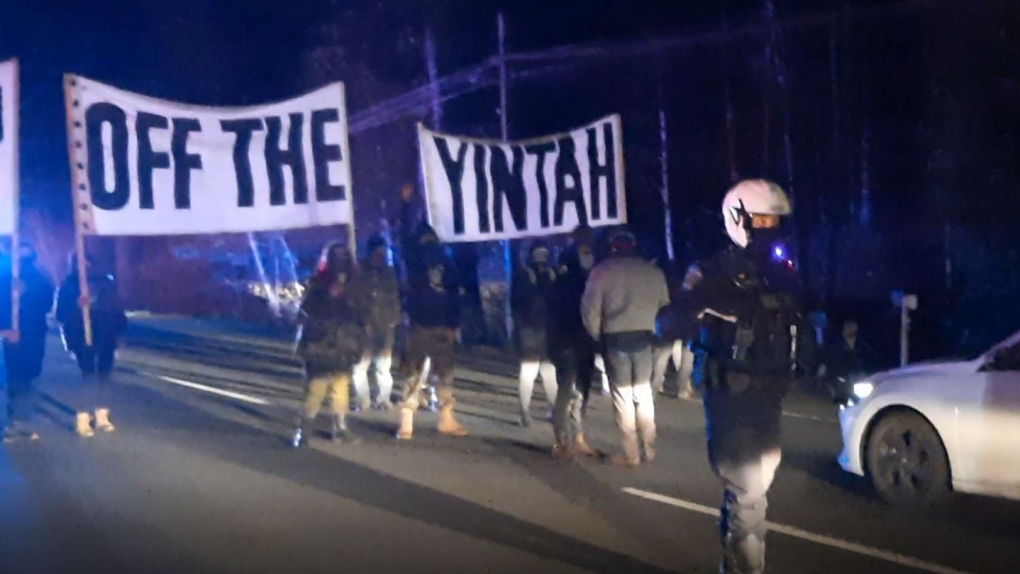Manitoba
U of M faculty strike talks hits stalemate, mediator calls for binding arbitration
Administration accepts recommendation but union eyes counter-proposal
The mediator trying to find a middle ground in the three-week-long University of Manitoba faculty strike has hit an impasse and is recommending binding arbitration to resolve the dispute.
Arne Peltz advised the two sides this weekend that he believes there is no likelihood they will reach a settlement without a protracted strike continuing.
As such, binding arbitration — in which a decision is legally binding and enforceable, similar to a court order — is the best path forward to an agreement, he suggested.
The U of M put out a news release on Monday saying it accepts the recommendation.
The University of Manitoba Faculty Association, for its part, doesn't tend to agree.
In an email to CBC News attributed to president Orvie Dingwall, the union said it is reviewing the proposal and "will make a counter-proposal regarding the specifics of an arbitration."
UMFA, which represents over 1,200 professors, instructors and librarians at the Winnipeg-based university, went on strike Nov. 2.
The association is seeking higher salaries for its members, arguing that persistently low pay is causing retention and recruitment problems. The U of M ranks second to last out of the 15 research-based institutions in terms of salary.
The union has also cited government interference in the bargaining process as preventing successful negotiations with university administration.
Last week, UMFA tabled an offer to the university's administration the union says would have addressed the issue of retention and recruitment of UMFA members and could have ended the strike, but the administration chose to reject it or to make a counter-offer.
"In addition to addressing the administration's unwillingness to present a realistic offer to UMFA members, the two sides have not yet agreed on issues relating to working conditions," Dingwall said in the release from UMFA.
"Specifically, the administration continues to refuse language that allows faculty to take their full vacation and refuses to accept language that would prevent the administration from forcing members to teach their classes online in non-pandemic times.
"UMFA strongly believes that these outstanding issues must be addressed before the association could agree to binding arbitration to address financial compensation. UMFA will inform the university of these outstanding conditions as a pre-condition before any discussions of binding arbitration would begin."
UMFA seeking $28 million in damages from
province for government’s interference in
2016 labour negotiations, court hears
Josh Crabb
CTV News Winnipeg Reporter/ Video journalist
Published Nov. 22, 2021
WINNIPEG -
As the University of Manitoba Faculty Association’s (UMFA) current strike entered its fourth week, lawyers for the union which represent academic staff told a Manitoba judge UMFA members should be awarded $28 million in damages due to the circumstances that preceded the 2016 strike.
Manitoba Court of Queen’s Bench Justice Joan McKelvey started hearing arguments on the matter Monday in a trial scheduled for two days.
The case is focused on damages UMFA’s lawyers told court faculty members should be awarded because of a Charter breach which protects a right to collective bargaining.
It surrounds the events of five years ago which resulted in a three-week strike, UMFA lawyer Garth Smorang told the court.
In his arguments, Smorang cited previous court findings from a challenge of the province’s Public Sector Sustainability Act and a Manitoba Labour Board decision which ruled the University of Manitoba committed an unfair labour practice by failing to inform UMFA that the university received instructions from the government during contract talks. The university has since apologized and paid members the max penalty of $2,000 each for a total of $2 million.
Smorang told the court in 2016 UMFA had received an offer from the university for a wage increase of 17.5 per cent over four years on the average member’s salary when the government got involved and ordered the university to seek a wage freeze.
UMFA is now seeking $21.8 million, which includes interest, in damages for the wage increases Smorang told the court members would’ve received under that agreement.
“We submit to you the facts of the case as presented to you and your findings, this loss is directly attributable to the government’s substantial interference in the 2016 round of collective bargaining,” Smorang argued.
Smorang told the court UMFA is also seeking damages to cover $2.5 million in strike pay to members in 2016, $177,000 for benefits covered by UMFA during the 2016 strike, $74,000 for the costs of running of the strike as well as $4.1 million in lost salaries incurred by members during the strike that year.
The details of the case are grounded in findings at trial and upheld by the Manitoba Court of Appeal, UMFA’s lawyers told McKelvey.
The Manitoba Court of Appeal ruled last month the government had a right to impose a wage freeze on the public sector but upheld the Court of Queen’s Bench ruling that found the government violated collective bargaining rights during contract talks at the University of Manitoba in 2016.
Smorang told the court government staff members were ordered by the Public Sector Compensation Committee—a committee court heard was made up of six members of cabinet which held meetings former Premier Brian Pallister sometimes attended—to impose the wage freeze.
Lawyers for the province are scheduled to make arguments in the case Tuesday.
The Manitoba government said out of respect for the legal process it won’t be commenting on the 2016 matters that are now before the court.






:quality(70)/cloudfront-eu-central-1.images.arcpublishing.com/thenational/YJAT23NJDJC4HJZIYM43GATVUE.jpg)
:quality(70)/cloudfront-eu-central-1.images.arcpublishing.com/thenational/IDWJFF5KPVD6FPELA4BVFWSEQM.jpg)
